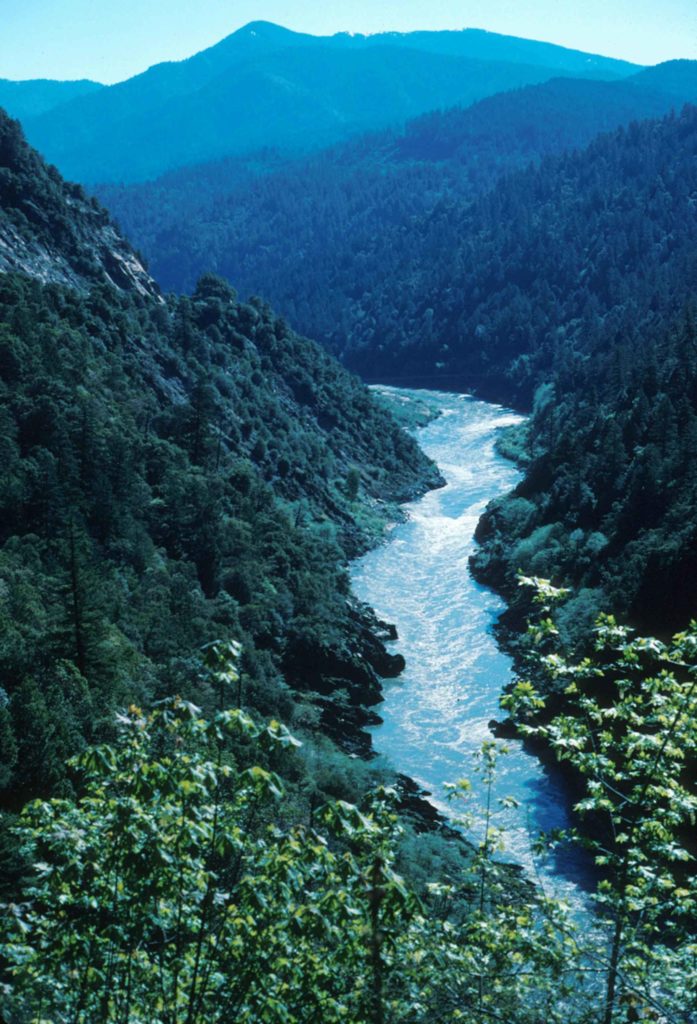The Klamath

The Klamath River in southern Oregon and northern California has long been one of the most controversial waterways in America. It’s a situation where there isn’t enough water to go around, where you have massive farms reliant on irrigation, tribes with treaty rights to the water, and salmon requiring a certain amount of water to live and, most importantly, spawn. But like many rivers in the West, decisions on water rights came during an unusually wet period. To say the least, we are not in an unusually wet period today. Instead, we are in a megadrought that is exacerbated by climate change. This is most definitely not the first time the West has been plagued by a megadrought. We know from tree rings that they have happened several times over the last 1,000 years. We also know that a megadrought doesn’t mean that every single year is dry, but there are a lot more dry years than wet. And as you can see here, right now, it’s really, really, really bad.

You can see the Klamath on the map. It’s the river that starts in far northwestern California and heads north through south central Oregon.
This river has been subject to all sorts of litigation over the last half-century. Several of the dams along it are finally coming down, a huge win for the salmon and their activists.
But the fights continue. And in this drought, the farmers in southern Oregon are flat out stealing the water:
On April 14, the Bureau of Reclamation (USBR), a federal agency that oversees the Klamath irrigation project, announced that farmers would only get 33,000 acre-feet of water this year due to drought conditions—the lowest allotment in its history. The project spans from southern Oregon to northern California. For context, farmers say they need 400,000 acre-feet in drought years. That didn’t stop the Klamath Drainage District (KDD) in southern Oregon—a public entity contracted to deliver water in the region—from turning on the spigot for its constituents two days later.
“We tried to hold off [diversion] as long as we could,” said district manager Scott White. White said the district board faced immense pressure to divert water from farmers in the region dealing with low soil moisture. “Our landowners were just champing at the bit.”
White said that the district was accessing water from the Klamath River through a state water permit rather than through the federal government’s allocation, which he claimed was standard operating procedure. The federal government doesn’t see it that way. In a letter addressed to the district shared with The Counter, USBR ordered White to stop making the diversions, which it called unlawful.
“[The] water that is currently in the Klamath River is committed to satisfying the Endangered Species Act (ESA), an obligation that supersedes irrigation deliveries and rights,” the agency wrote. “Therefore, KDD’s diversion of water … is contrary to the ESA and may subject KDD to legal action if it does not immediately cease diversions.”
The releases mean that there’s less water to go around for everyone else who needs it, in a year where there was already little to begin with. According to a USBR spokesperson, the agency is making up for the diversions by releasing more water from the lake. However, tribes and commercial fishermen downriver are worried that prolonged diversions will reduce river flow long-term, in turn exacerbating poor environmental conditions and further harming salmon populations that they depend on for food, income, and ceremonial practices.
“It felt very, very disappointing that individuals would take actions, such as to illegally divert water, when there is so much pain being felt throughout the basin for communities who aren’t getting the flows or the water levels necessary for their communities,” said Frankie Myers, vice-chairman of the Yurok tribe. “It felt like a pretty selfish act.”
Salmon are a culturally and economically important species for the Yurok. But poor river flow, pollution, disease, and dams that obstruct movement have all played a role in the decline of the Klamath River’s salmon population.
These fights are going to continue along the Klamath and throughout the West. And they will be heavily racialized, as white farmers demand “their rights,” under the assumption that the tribes (or Mexico where relevant) have no real right to “American” water.


